History

Most probably, Grennan Castle, an 18m×13m rectangular castle standing on the west bank of the River Nore [1, 2], was built around 1210 by Thomas FitzAnthony, an Anglo-Norman mercenary from Wales, who was granted a large area of land by William Earl Marshall (son-in-law of Strongbow) and nominated the Seneschal (Governor) of Leinster, a position that he held till 1223 [3, 4]. For several years, Thomas was one of the most powerful men in Ireland, till around 1225, when he was dismissed from his role as he was not able to pay his debts to the Crown, under Henry III [3]. He died soon after and the estate of Thomas FitzAnthony was divided among his five daughters [3, 5]. In particular, Desiderata, married to Stephen the Archdekne, was the daughter who inherited the greater part of his Kilkenny property [3].
In the 1230s, their daughter Emma married William De Dene, whose family had come over to Ireland with Strongbow, and, as part of the wife’s dowry, he most likely acquired a considerable portion of Thomas FitzAnthony’s lands including Grennan Castle and an enourmous wealth [3]. When he was at the peak of his fortune, in 1261, he took part with the Anglo Normans in the raid into Kerry which ended in the disastrous defeat at Callan near Kenmare, where he was slain or died soon afterwards [3].
His grandson, Sir Reginald de Dene, was summoned to join the King in several wars fought by the crown during those turbulent years, before dying in 1302 [3]. His heir, Sir Thomas de Dene, was mortally wounded by the Irish in 1330 and his eldest son, Fulk, succeeded him, who was later nominated Sheriff of Kilkenny [3].
Since his death in 1370, it is difficult to track the ownership of Grennan Castle going forward. According to a (not verified) legend [6], a king was hosted in Grennan Castle: if the story is true, it was probably King Richard II, who stayed in County Kilkenny in 1395 and again in 1399 [3]. However, records of this period suggest a disputed succession to the property [3]. We have no information on the first half of the 15th century and, according to the records, the castle had several owners, members of the Denn family [3, 4], who reached the height of their power around 1638, owning thousands of acres and controlling the South East of Ireland [7].
This situation lasted till 1649, when Thomastown was attacked by Oliver Cromwell and Grennan Castle was besieged by Cromwell’s army and after two days the defending garrison surrendered, hence the castle was dispossessed [3, 4]. After that, the Denns were banished to County Clare [7].
In 1655, Grennan Castle was described as a fabulous residence, with many outhouses, stables [7].
Under Cromwell, Grennan Castle was granted to Anthony Stamp and the next owner was probably a William Harrison, Member of Parliament for Thomastown towards the end of the 17th century [3]. During the 18th century, John Hobson, a Dublin solicitor and Member of Parliament for Inistioge probably owned the castle which was inherited by his relatives, the Greene family, after his death in 1803 [3].
The ruin was well kept up until the early 19th century, but then the courtyard walls and outer buildings have been destroyed [1]. Today the castle is an abandoned place but definitely still worth a visit, being one of the few Norman Keeps in the South East [7].
At this stage, the visitor might be intrigued by the legend mentioned above. It is not fair to leave without giving some more details about it. So let’s go back to the end of the 14th century, when the castle was inhabited by the Denn family and tell this story narrated by W. J. Pilsworth [7]. The King of England, Richard II, furious at the Denn man who occupied Grennan for not having paid taxes, vowed that he should have Denn’s head served to him on a platter at the table in the hall of Grennan Castle, and hence advanced towards it [3, 6, 7]. Surprisingly, on his way, the King found several casks of wine, placed for himself and his followers by the lady of Grennan Castle, to mollify the King's mood [3, 6, 7]. Once at the castle, he was welcomed by the woman of the house, who had prepared a rich banquet in his honour [3, 6, 7].
A large silver dish was placed at one end of the table and, when the cloche was lifted, the head of Denn appeared, covered in blood [3, 6, 7]. At this point, according to Paris Anderson [3], the King, smitten with remorse, said: “As grace be mine I'm sorry for the good knight’s wine I’d give a dozen of my men For thy one life, my outlaw Den.” [3].
After hearing those words, Denn, who was actually kneeling beneath the table, with his head coming out from a hole, pretending to be dead, promptly reacted and was then pardoned [3, 6, 7]. As a result, Denn was allowed by the King to keep the Castle and Glen on condition that he kept peace [7].
Considering that a dispute over the succession of the lands and the castle at that time is a documented fact [3, 6], there is a concrete possibility that this story did actually happen.
References
- [1] MYCARLOW, Grennan Castle, Co. Kilkenny
- [2] Irish stones, Grennan
- [3] Kilkenny Archaelogical Society, Thomastown By W. J. Pilsworth
- [4] Wikipedia, Thomastown
- [5] Medieval News, The children of Thomas Fitz Anthony
- [6] dúchas.ie, How the King Was Sold by a Lady - A Legend of Grennan Castle
- [7] kilkennylive, Grennan Castle and Denn’s head on a platter for a King












